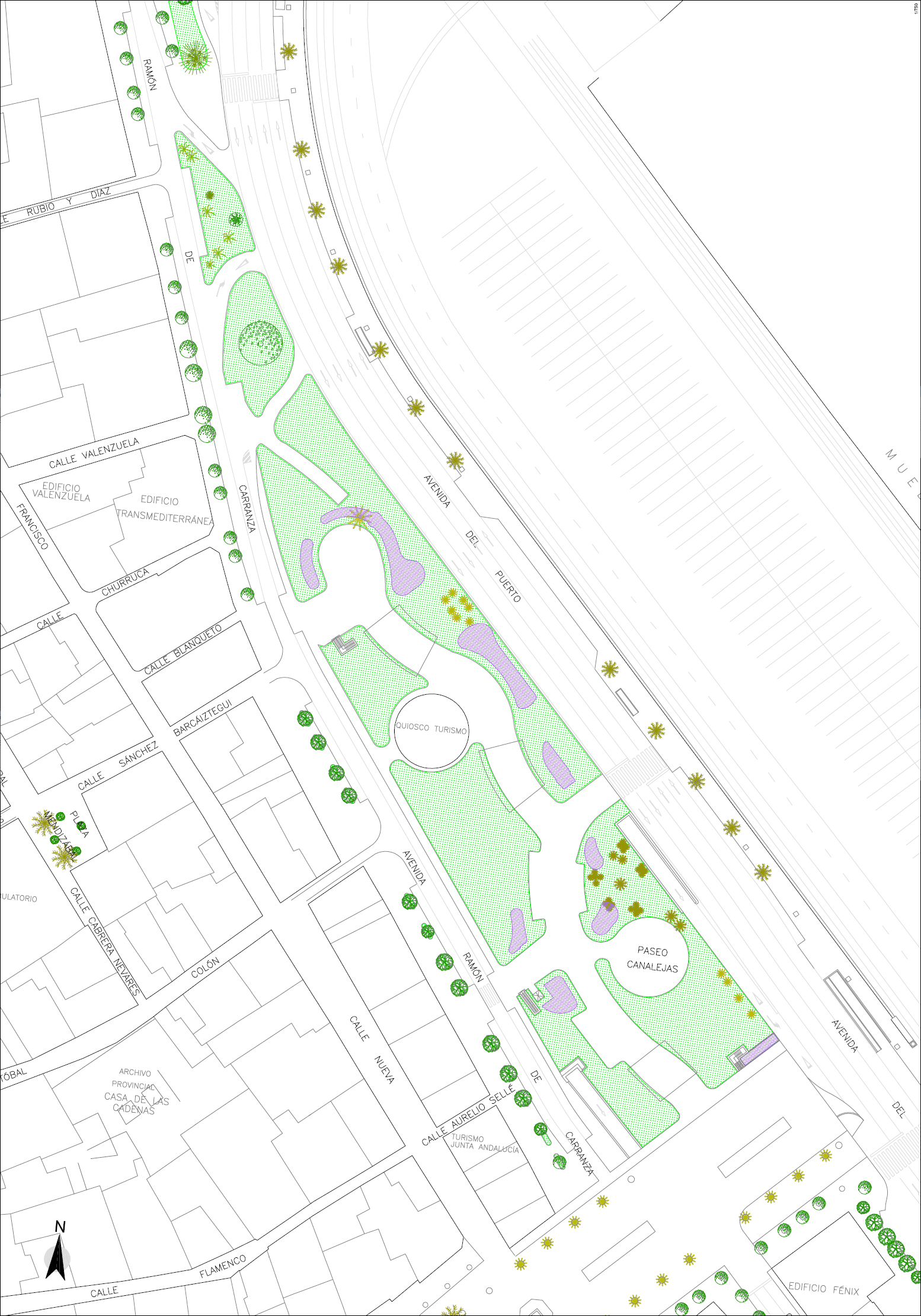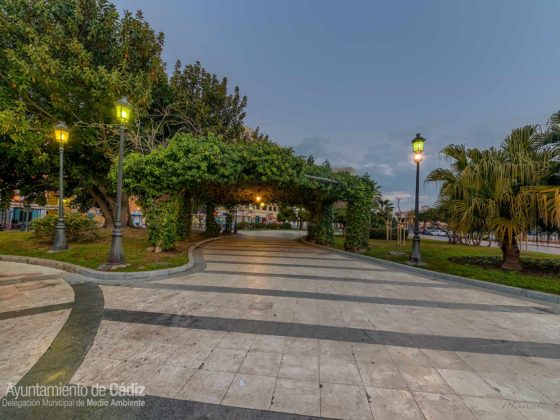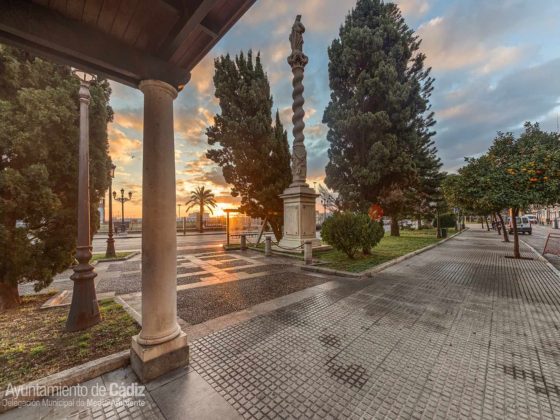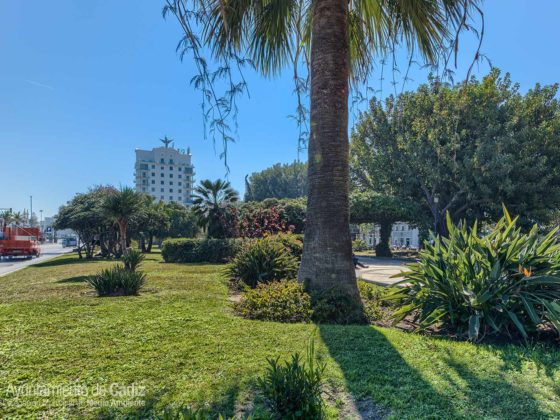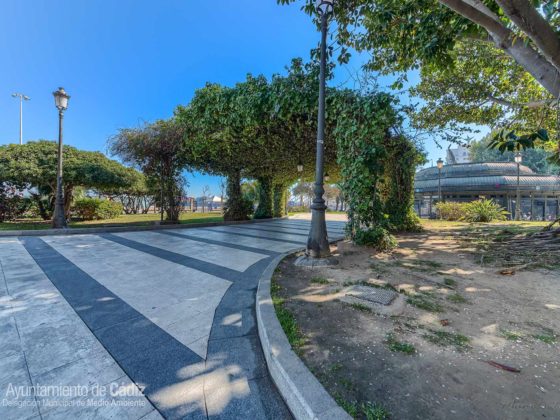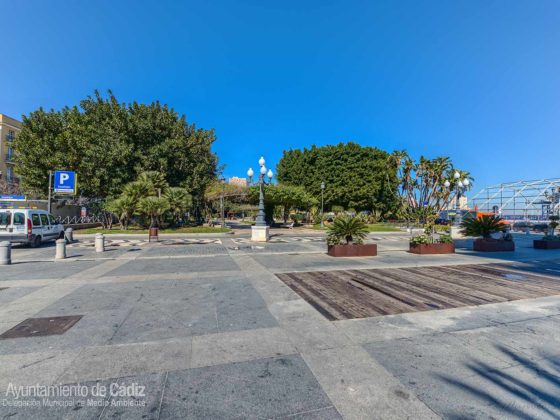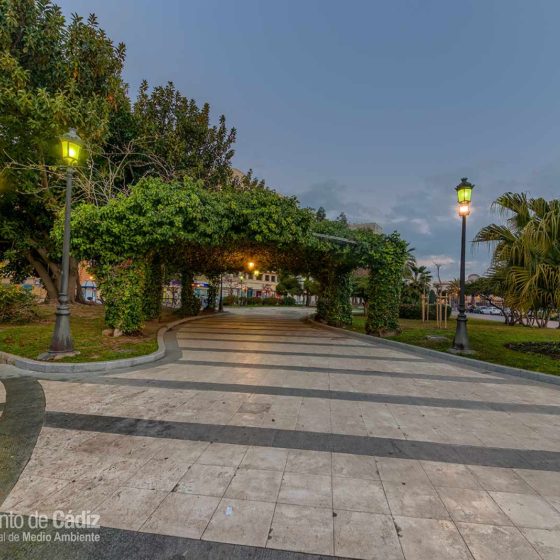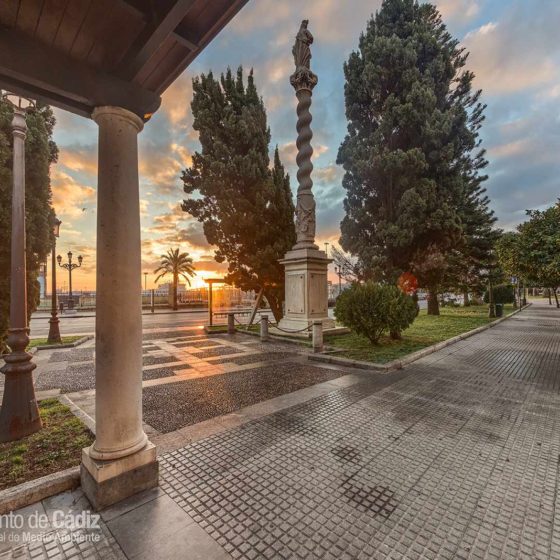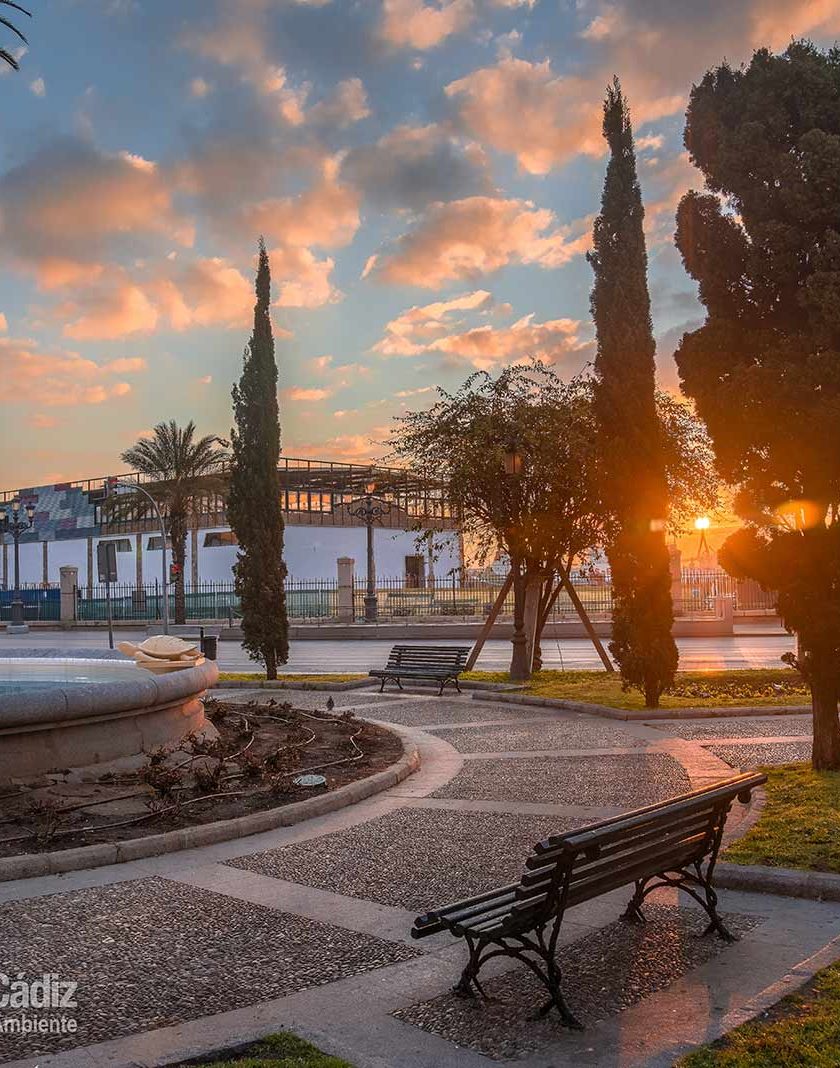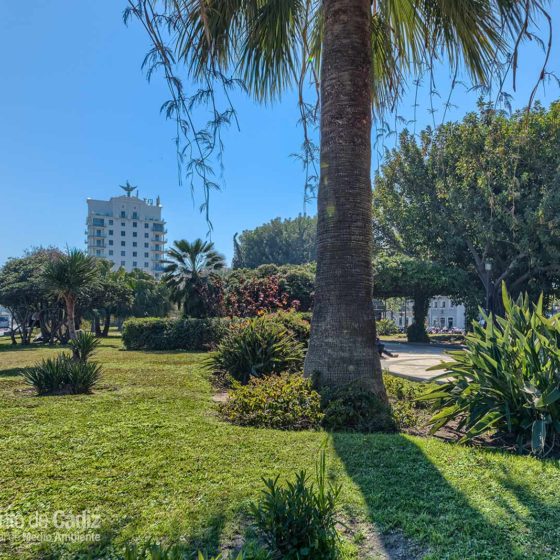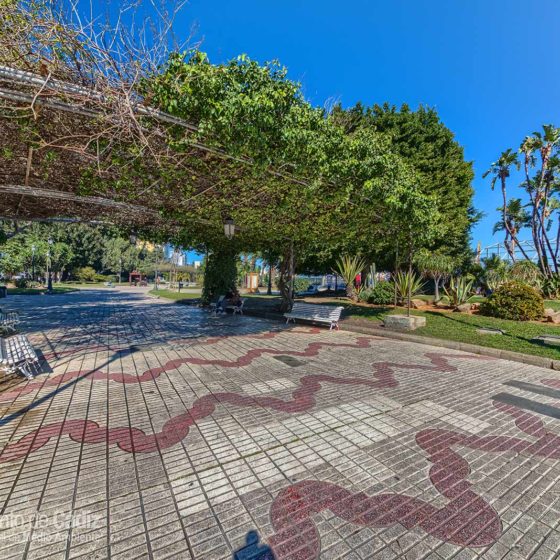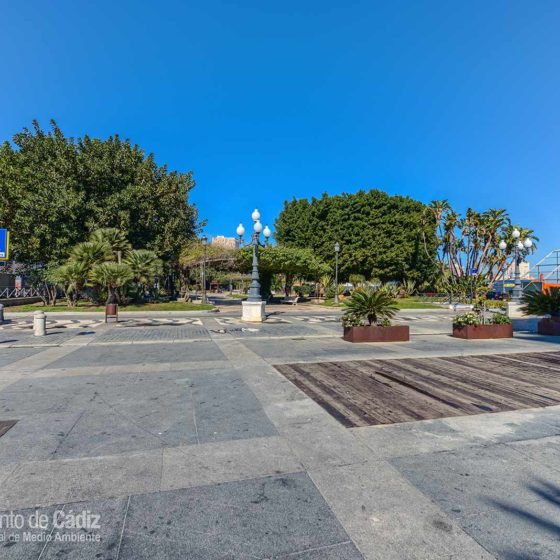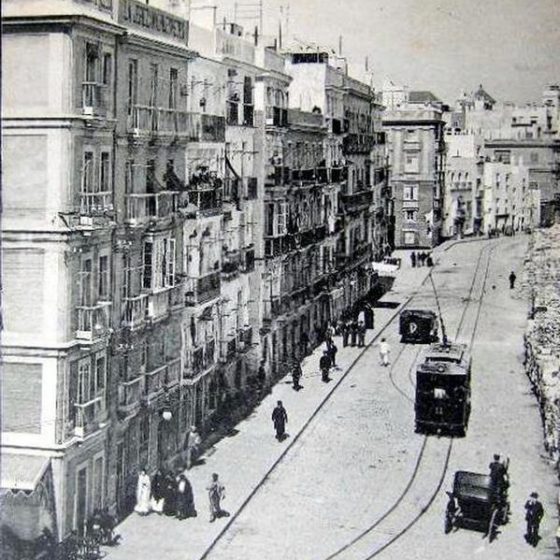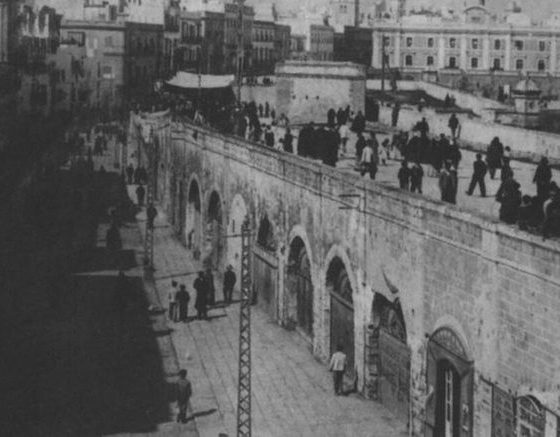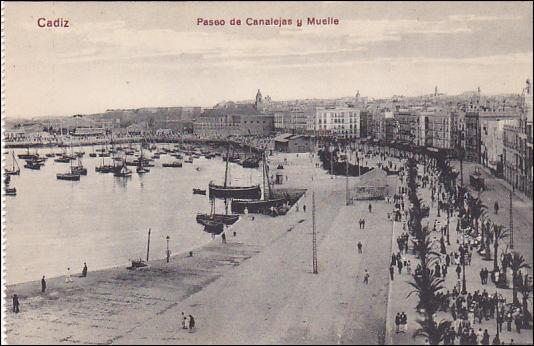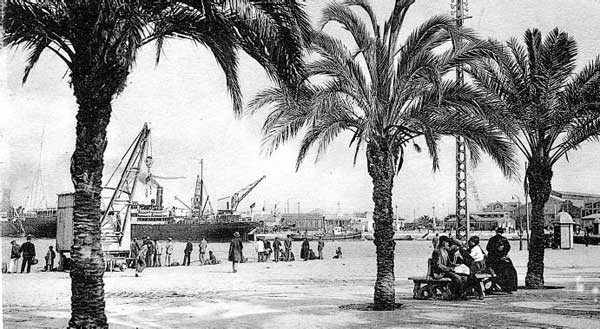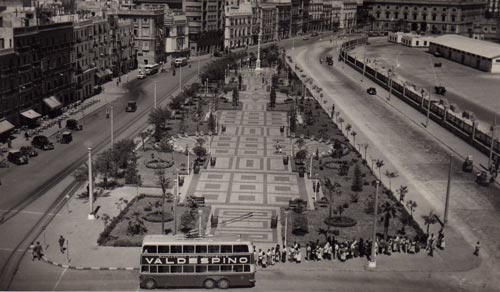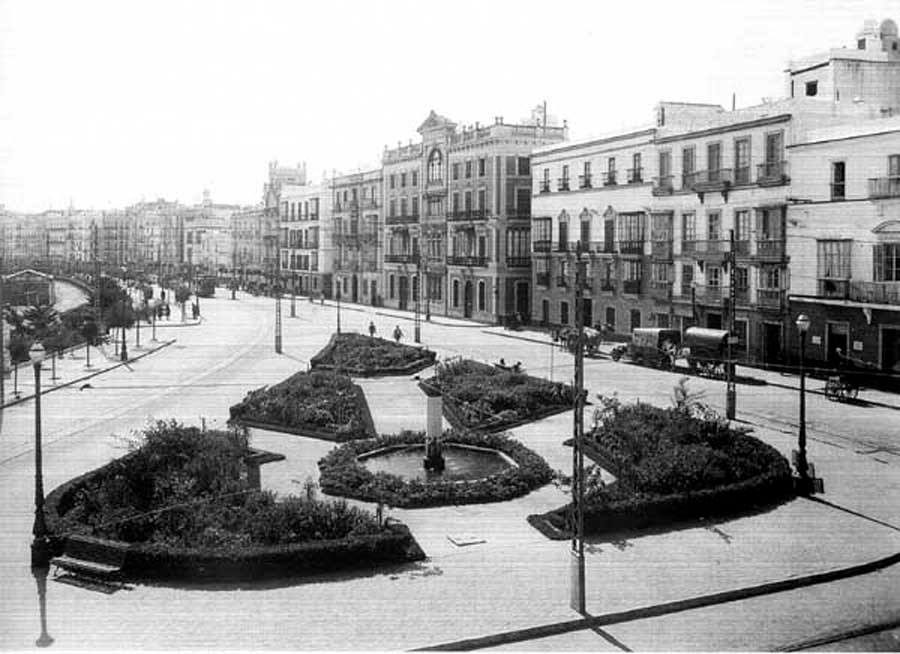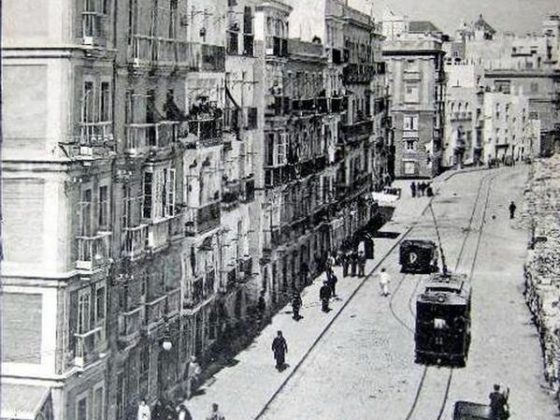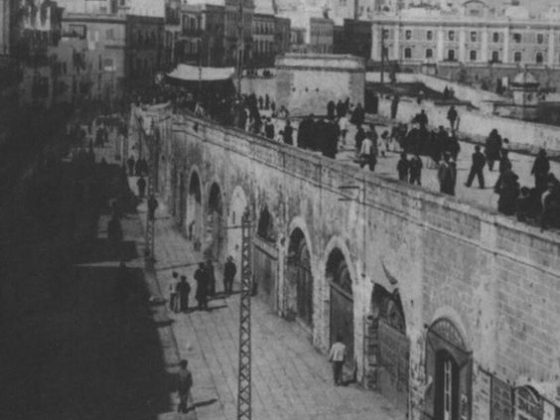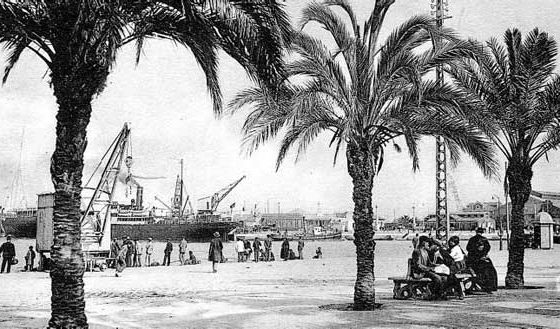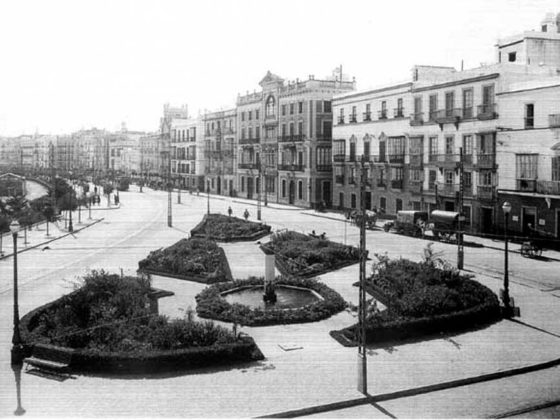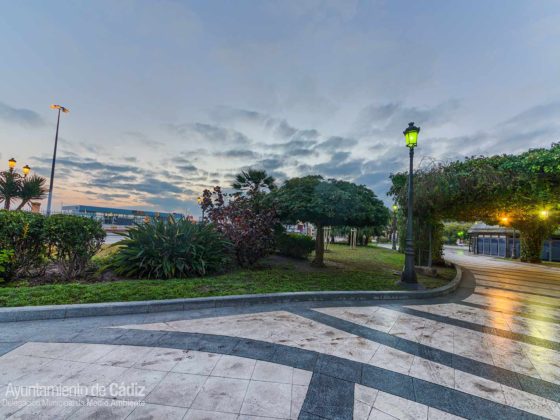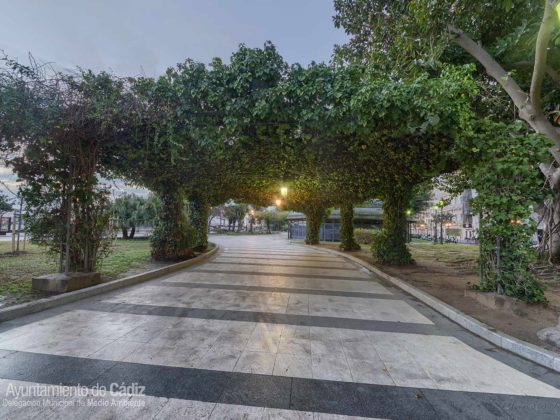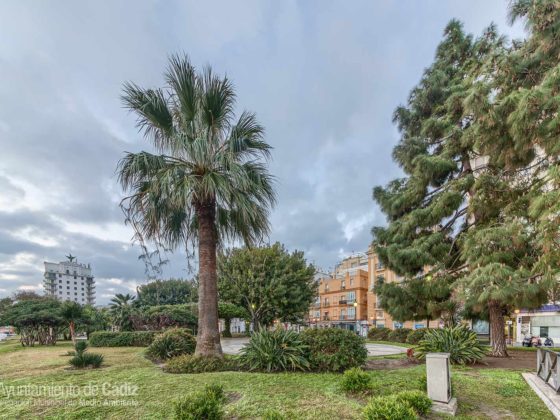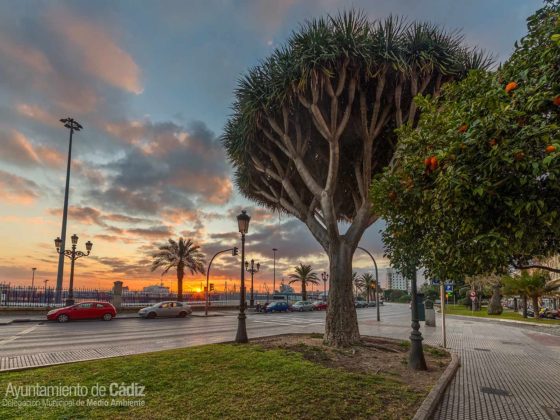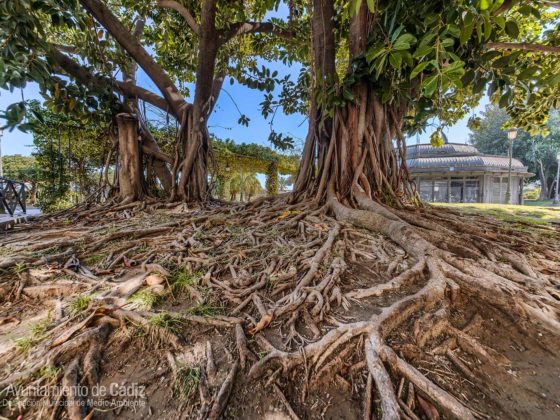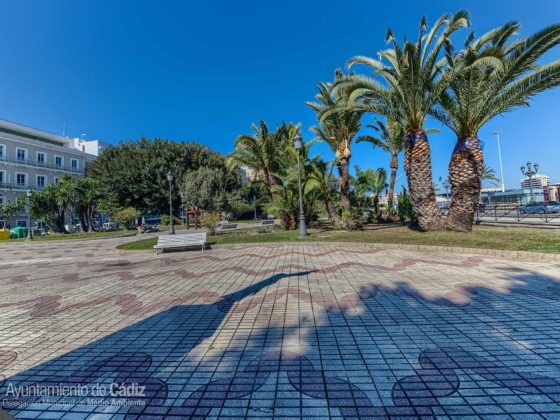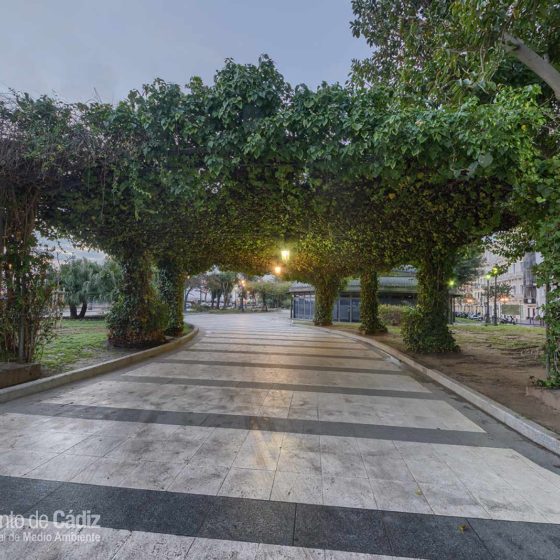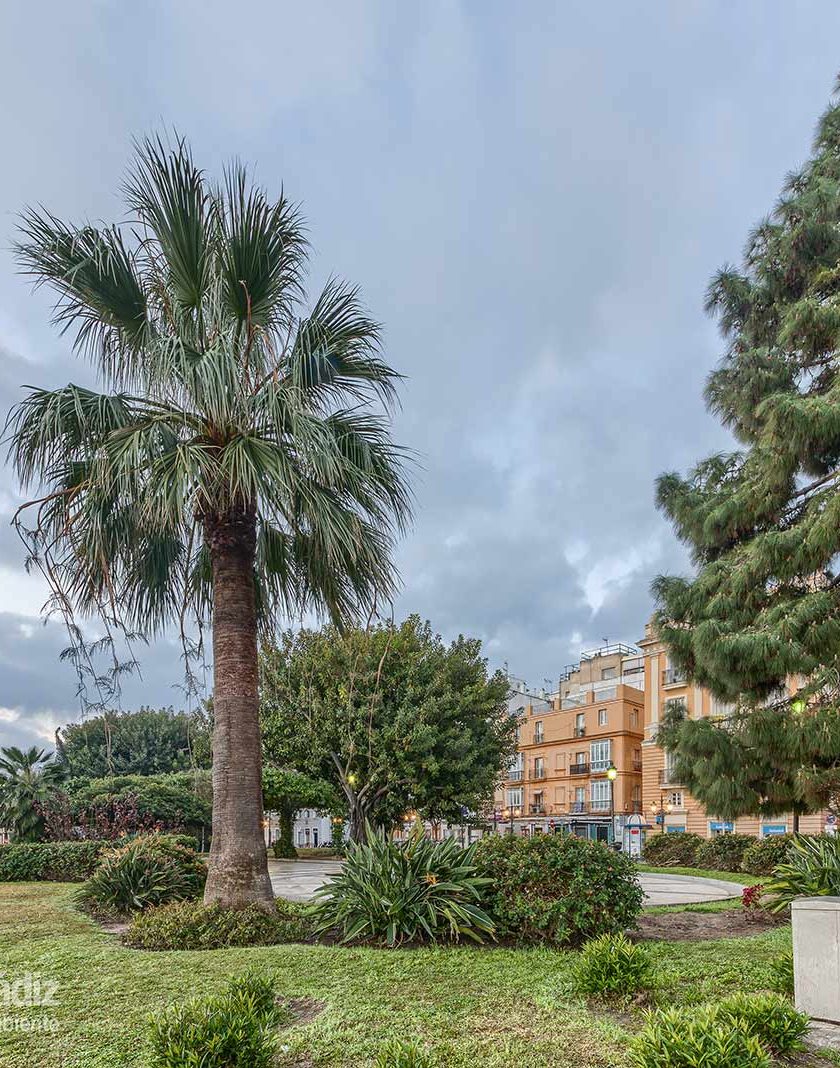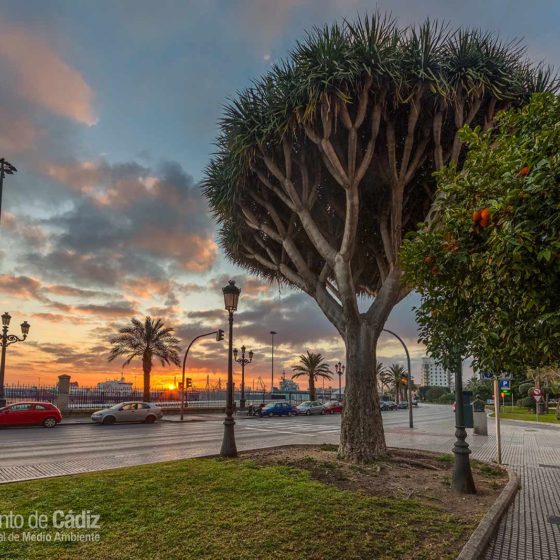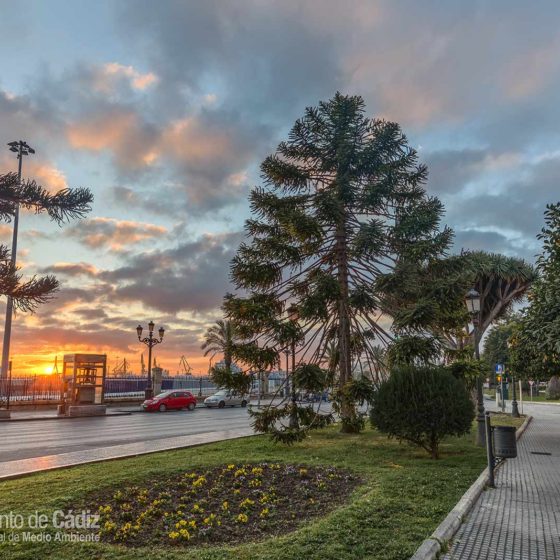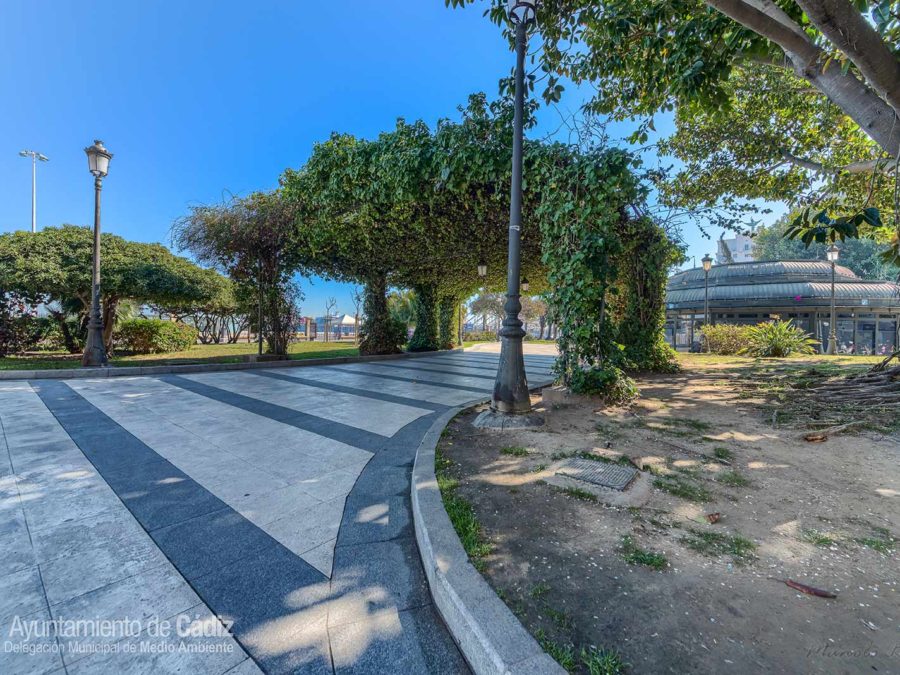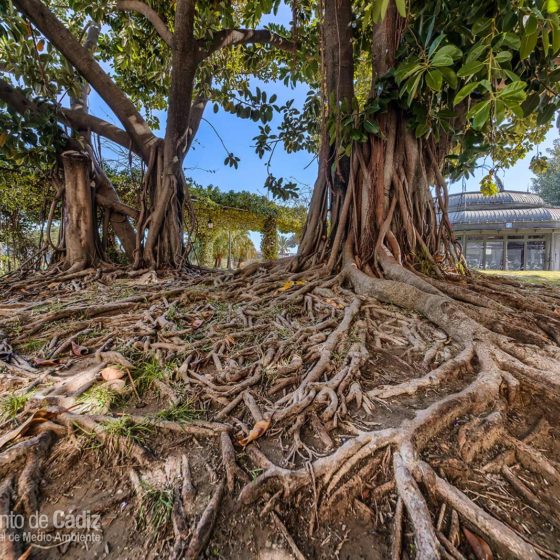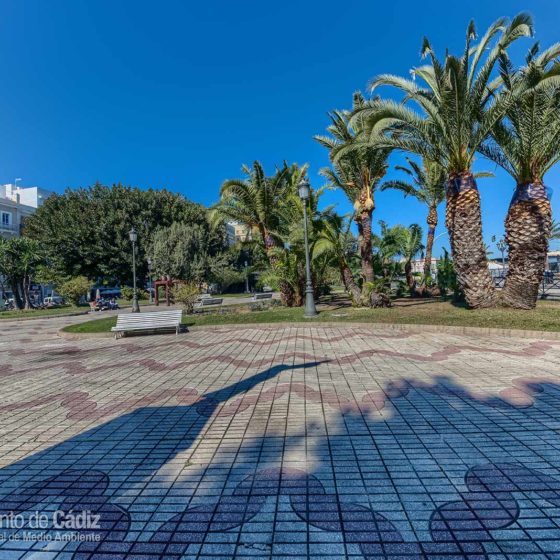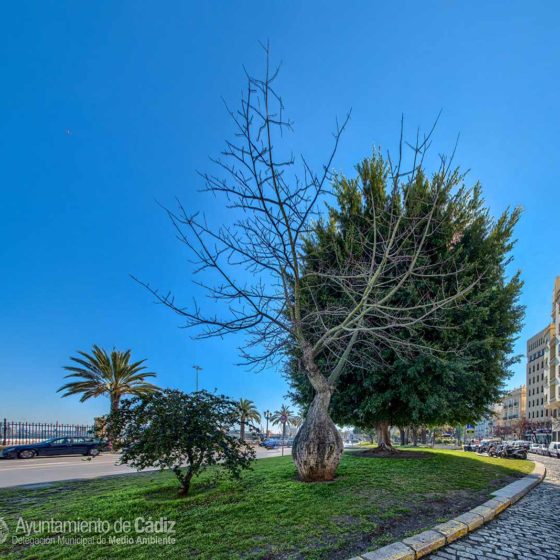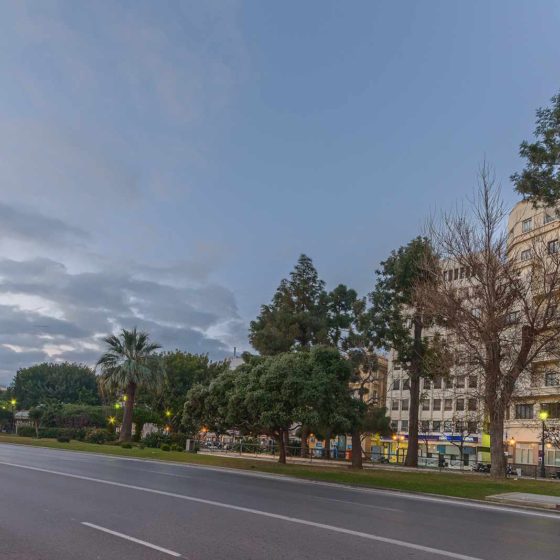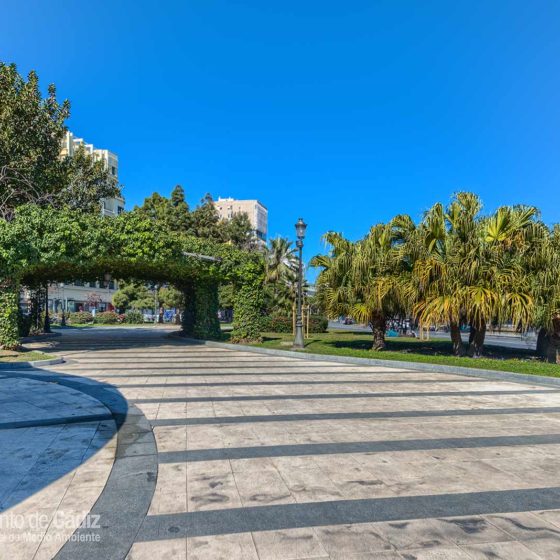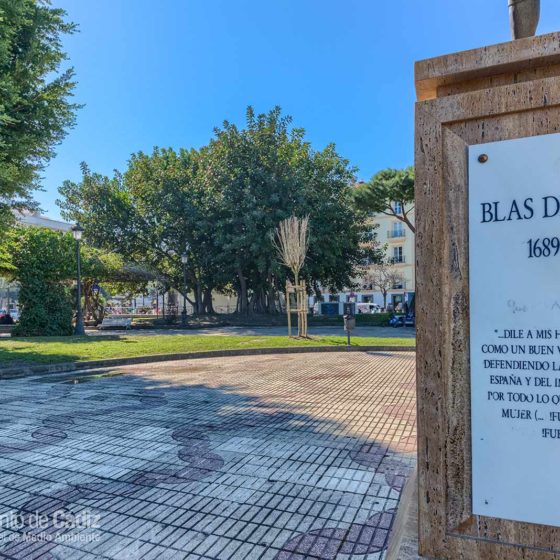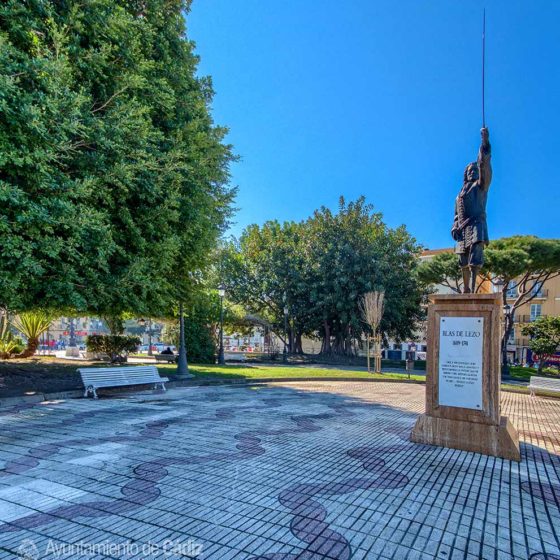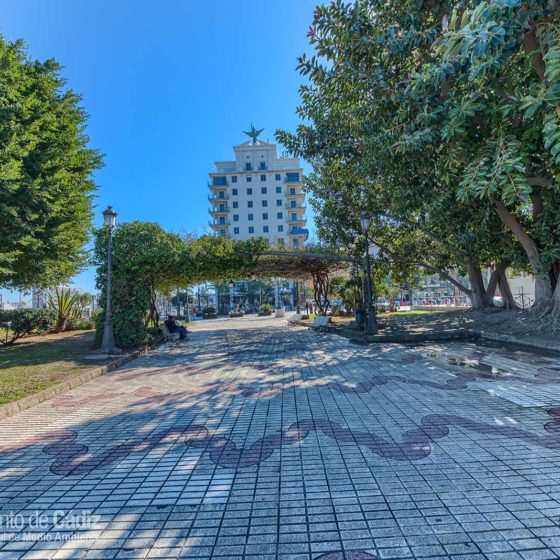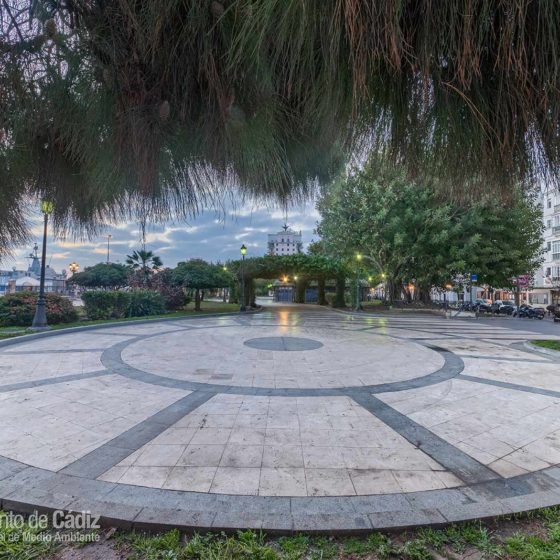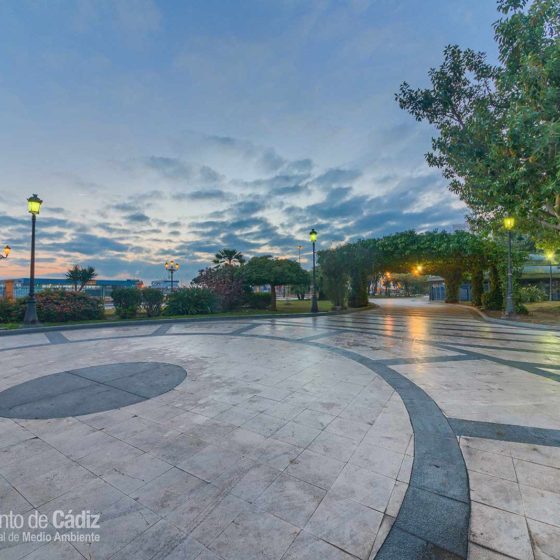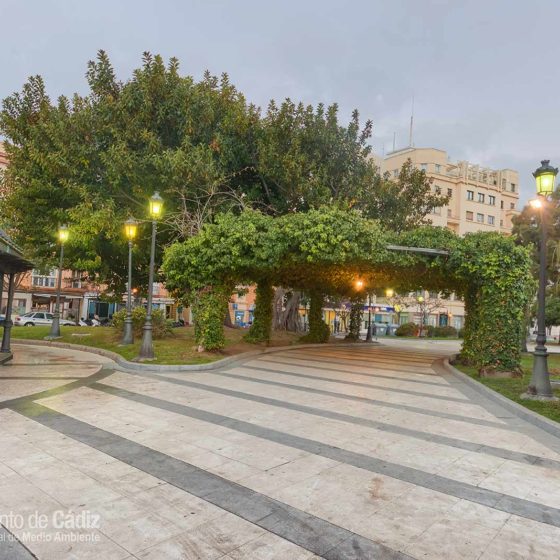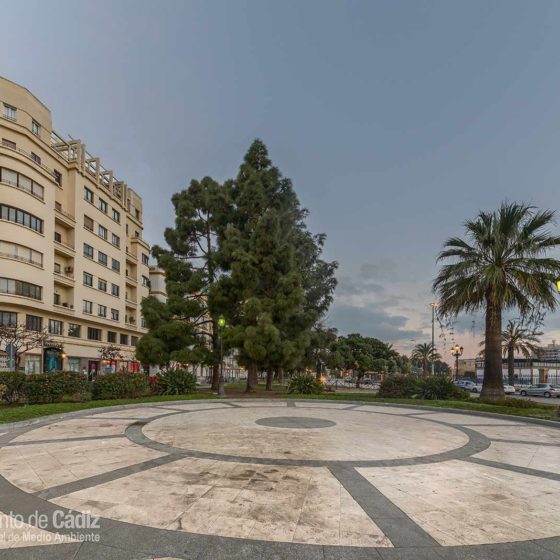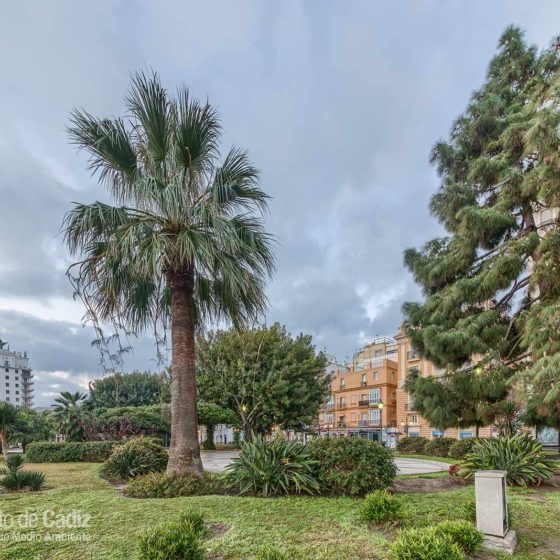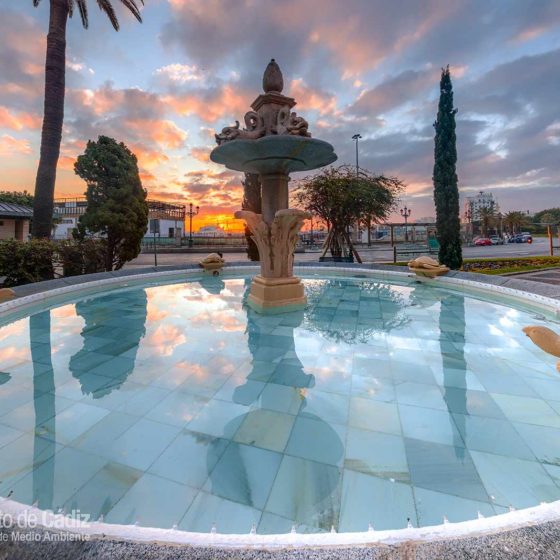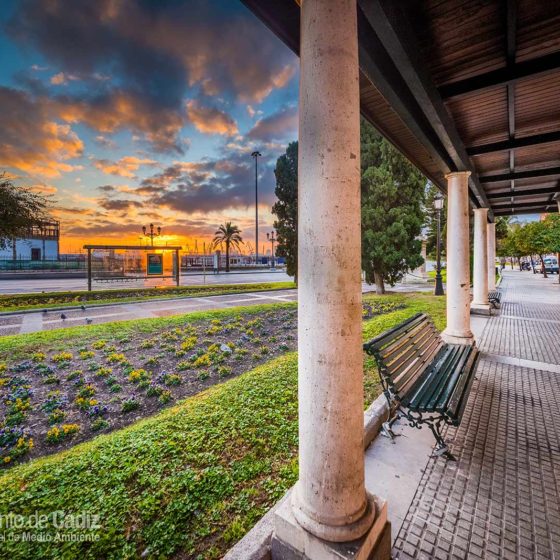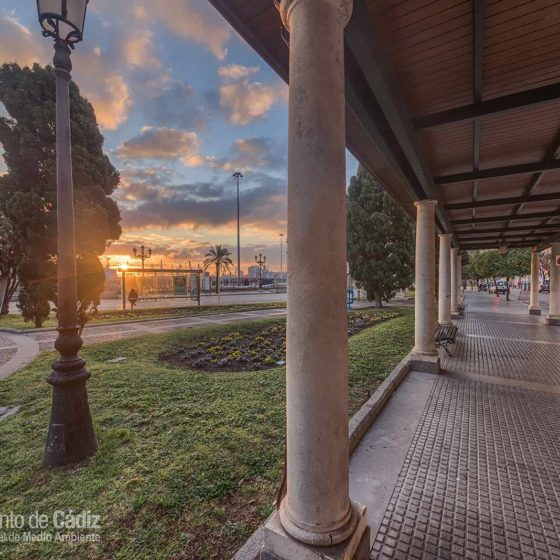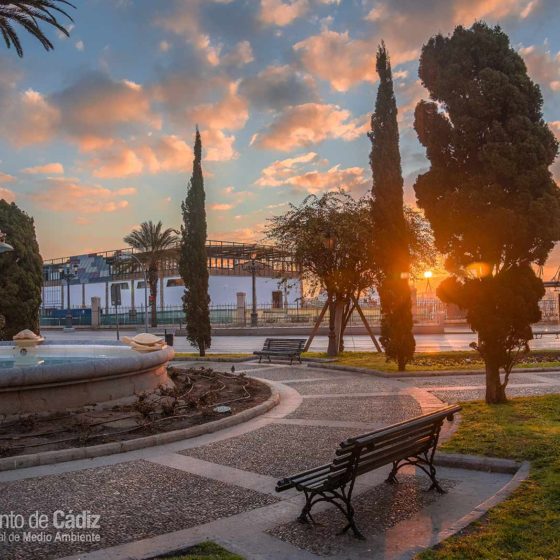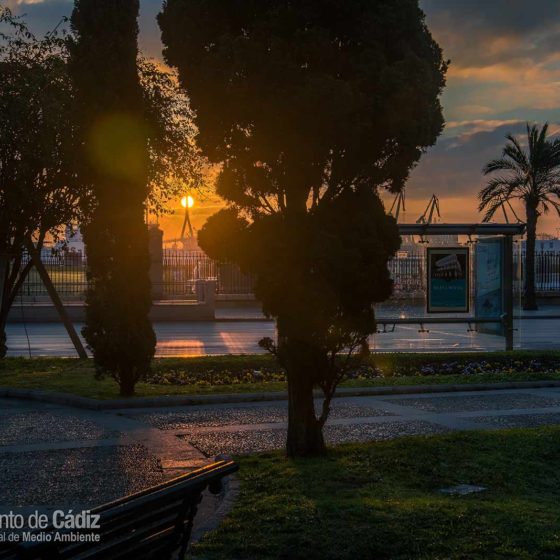This space was created on the perimeter occupied by the walls that bordered the city, whose demolition began at the beginning of the 20th century.
The sea walk was dedicated to José Canalejas y Méndez, a liberal politician, journalist and Spanish statesman, who was responsible, among other laws, for those of the Mandatory Military Service.
The Sea Walk
History
Botanical species
The Sea Walk
The Paseo de Canalejas with an area of 8,510 m2 of green area and the Plaza de las Tortugas with 1,060 m2, constitute a fragmented green area between the Palace of the Provincial Council and the Plaza de San Juan de Dios. On the east, they are surrounded by the Avenue of the Port and the commercial port of the City and to the west, the Avenue 4th of December 1977.
The floor of the Paseo, more or less triangular, has not undergone many changes in recent decades. However, the same cannot be said for its flowerbeds, since, the construction of an underground car park forced a remodelling of the gardens, opting for an irregular and sinuous distribution, as opposed to the previous, more symmetrical and rectilinear one.
The walk is covered by three pergolas with climbing plants of the following species; bougainvillea, ivy, bignonia and jasmine. It houses the Tourist Information Office of the city, which is shaped like a polyhedron with glass walls. The monument is dedicated to the famous and great strategist of the Spanish Navy, Blas de Lezo.
The Plaza de la Tortugas (Tortoise Square), meanwhile, is a small garden where the Fountain of the Turtles is located, surrounded on the outer edge by bitter orange trees (Citrus aurantium). In the gardens that make up this square is the monument to the Virgin of the Rosary, erected by the city in memory of the tsunami of 1755.
History
The Paseo de Canalejas is built on land that was acquired after the demolition, in 1906, from the defensive Royal Wall in this area of the city and that separated the pier from the city, because it hindered economic expansion of the city through the port and did not offer an adequate access for travellers arriving by boat.
Thus, on the site of the old demolished wall and the street that existed parallel to said wall, Isaac Peral Street, named since 1890 at popular request as a tribute to the illustrious scientist and sailor. He carried out experiments on his submarine in the Bay (the first submarine in history), and open gardens were built along the dock, where the people of Cadiz could watch the port work and walk near the boats, which led to the name Paseo de Isaac Peral. Also, located in the North end, in what nowadays is known as la Plaza de Las Tortugas, the sculpture of the Virgin of the Rosary in tribute of the city after the tsunami of 1755, commissioned by Torcuato Cayón and carried out by Gonzalo Pomar and Jácome Vaccaro. It is made from white marble and placed on a spiral column, which is also made from white marble and has a decorative base.
At the beginning of the 50s, the City Council installed a gate that separates the Paseo del muelle, something that did not please the people of Cadiz, as they had been used to walk freely between the dock and the gardens.
Over the years, the Paseo has undergone several renovations. The most controversial was that of the construction of an underground car park whose works produced, during its construction, the temporary disappearance of the gardens. In 2008, a new remodelling took place to allow for the extension of the underground parking and the setback of the separation fence with the pier.
Monument of Blas de Lezo
The statue is located on the Canalejas promenade and was inaugurated on the 12th March, 2014. As the official in the Spanish Navy, the Gipuzkoa of Walks became one of the greatest strategists of the Navy in its history. The “Mediohombre”, as he was known because he was missing an eye, had a wooden leg and his right arm was useless, battle wounds, and he is a symbol in Colombia and Spain. He lived for a time in El Puerto de Santa María with his family.
Among his many achievements, he managed to resist the attack of 195 English ships with only 6 ships during the 18th century. Thus, the greatest challenge of Blas de Lezo happened, without a doubt, in Colombia. Here, he had to defend Cartagena de Indias (the centre of American trade and where the wealth of the Spanish colonies converged) from the English, who were eager to conquer the territory. The British took advantage of an insult to their empire to try to take the city.
For this, England put together a formidable fleet never seen in history (except for that used in the Normandy landings), under the command of the English Admiral Edward Vernon. The armada consisted of 195 ships, 3000 guns and some 25,000 Englishmen supported by 4,000 more US militiamen. By contrast, Blas de Lezo did not have a large number of soldiers or ships to defend the city: the defences of Cartagena did not exceed 3000 men, 600 archer Indians, plus the marines and troop of marine infantry of the six ships of war that the city had available: the Galicia (which was the Captain ship), the San Felipe, the San Carlos, the Africa, the Dragon and the Conqueror. The ratio between the Spaniards and the English was 1 Spanish man for every 10 Englishmen and even so, he managed to defeat the English admiral and preserve Cartagena de Indias.
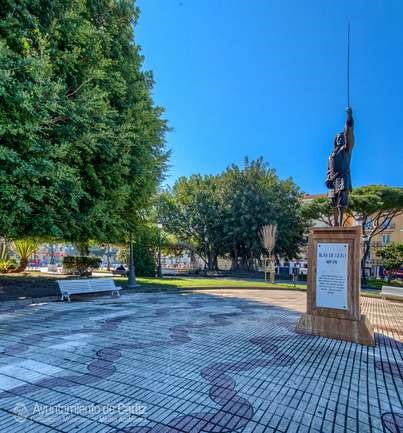
His statue, directs his gaze to the bay with his sword held high::
«… tell my children that I died as a good Basque, loving and defending the integrity of Spain and the Empire, thanks for all you have given me a woman (…) Fire! Fire! Fire! ” can be read in one of the inscriptions.
Botanical species
Botanical inventory of the most important species of the Paseo de Canalejas and Plaza de Las Tortugas:
|
Ahace americana Arecastrum romanzoffianum Acer negundo Araucaria bidwilli Araucaria excelsa Becaurnea recurvata Bouganvillea glabra Casuarina equisetifolia Cestrum nocturnum Chorisia speciosa |
|
Citrus aurantium Cupressus sempervirens Cupressus macrocarapa Dracaena draco Ficus benjamina Ficus elástica Grevillea robusta Hedera helix Hibiscus syriacus Lagunaria patersonii |
|
Ligustrum lucidum Ligustrum japonicum Macrozamia spp Metrosideros tometosus Nerium oleander Phoenix dactylifera Phoenix canariensis Phoenix reclinata Pinus canariensis Pinus pinea |
|
Pittosporum tobira Populus deltoides Prunus cerasifera pisardii Sophora japonica Strelitzia alba Spathodea campanulata Trachycarpus fortunei Tecomaria capensis Yucca aloifolia Yucca elephantipes Washingtonia filifera |


